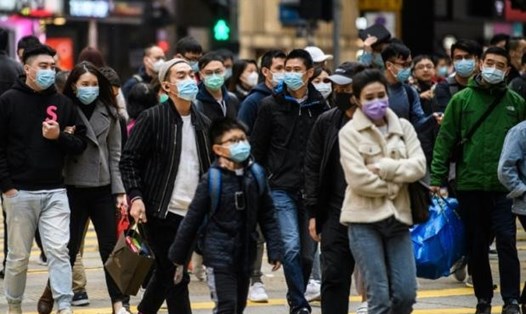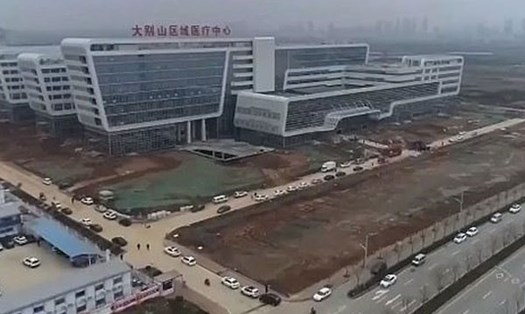Millions of people follow daily videos of the construction of these new medical facilities. Two specialized hospitals for anti-corruption have been formed from vacant land in the past few days.
China's state broadcaster released a video from above of a construction site with machinery digging foundations, trucks carrying cables, cement, pre-made parts and generators. Workers are working day and night to meet the construction completion time frame.
Huoshenshan Hospital (Hoa Than Son) started construction on January 24 and is expected to be put into operation on February 2 with 1,000 beds on a 269,000 m2 plot of land on the outskirts of the city.
Another equally ambitious milestone is Leishenshan Hospital (Loi Than Son) expected to be put into operation 2 days after Hoa Than Son Hospital.
Xinhua News Agency said that Leishenshan Hospital is located in Jiangxia District, a suburban area south of Yunnan. This facility is located on an area of about 60,000m2, including 51,000m2 for patient areas and 9,000m2 to build dormitories for medical staff.
The hospital was originally designed with 1,300 beds, but the Vu Han government decided to install an additional 300 beds after the outbreak of the epidemic in recent days.
Both Leishenshan Hospital and Huoshenshan Hospital are expected to be managed by Chinese military medicine.
The rapid construction of these hospitals in Yunnan raises the question: How can China completely reduce the construction time frame when a project with full medical equipment usually takes several years to complete. Another question is whether such a rapid construction speed is safe?
According to Quartz, because he did not have time to consult on a separate design, Vu Han officials are using a design from Xiaotangshan Hospital (Tieu Thang Son) - a facility with 1,000 beds in the suburbs of Beijing built within a week during the SARS pandemic in 2003.
Using pre-made units is the key to building field hospitals to fight Corona virus in Vu Han. The rooms that have been fully manufactured and assembled are transported to the construction site and placed in the location.
This construction technique is completely safe - thorsten Helbig - a structural engineer, co-founder of German technical company Knpers Helbig said.
"You can definitely build pre-cast buildings with complete structures," he said.
This expert explains that units are assembled in a factory-controlled environment, designers and builders can fix all problems and ensure all modular blocks are compatible with each other before being assembled. For traditional buildings, construction depends on weather conditions and the working methods of different contractors in charge of different parts of the project.
Today, hotel chains from Citizen M, Marriott... all use pre-made parts in construction plans.
Pre-made or "construction modulus" parts are also used in emergency situations in many places around the world. For example, the US Department of Defense can quickly build field hospitals to serve emergencies almost anywhere. Students at a university are even testing the ability to use transportation containers, connected together, to assemble a rapid-acting medical facility.
"This technology exists and is being used. His advancement is probably the future of rapidly-implementing healthcare," said HOK architect Scott Rawlings.
Engineer thorsten Helbig said that compared to the US and European countries, China is more comfortable applying new construction methods. "They are much more open to new technologies and technology change," he said.
In 2016, China completed 84 high-rise buildings with a height of about 198m or more, while the US only built 7 high-rise buildings at this height. The 57-storey mini Sky City skyscraper in Hunan was completed within 19 days.





